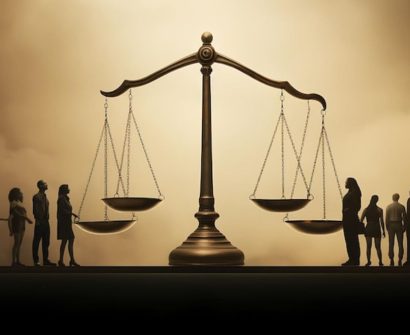
Article 14 of the Indian Constitution is where the doctrine of reasonable classification first appeared. Every citizen of the nation has a fundamental right to equality under Article 14. Since it guarantees equality to everyone living in India, it is among the most significant clauses in the constitution.
It guards against prejudice based on caste, religion, race, gender, and place of birth. Article 14 covers two aspects: equal protection under the law and equality before the law. Prior to this, a reasonable classification test was carried out to determine whether the legislation contains a reasonable classification; in other words, the test was held to verify the constitutionality.
what is reasonable classification under article 14 of COI?
- According to Article 14 of the Indian Constitution, the doctrine of reasonable classification is a legal precept that guarantees equitable and just treatment.
- It permits the legitimate assembly of people or things according to comprehensible distinctions that are logically related to the legislative intent. This classification eliminates arbitrary discrimination by acknowledging that no two cases are the same and allowing for customized care for particular groups.
- It protects against abuse by requiring a valid connection between the classification and the goal of the law, guaranteeing equality before the law.
- Examining the reasonableness of classifications is a critical function of judicial review, which strikes a balance between recognizing the diversity of reality and preserving constitutional principles.
doctrine of reasonable classification in indian constitution: Important Principles to Determine it
- Even if a law applies only to one person because of unique circumstances that only affect that person, it is still constitutional. You can treat that particular person like a class.
- The person who makes an allegation regarding the arbitrary and unreasonable application of the law will bear the burden of proof, with the presumption always being in favor of the statute’s constitutionality.
- In some circumstances, this presumption can be refuted by demonstrating that the statute does not create any particular hierarchy or distinction that is unique to any one person or class and that it does not apply to any other person or class, despite the fact that the law targets that particular person or class.
- It is necessary to assume that the legislature appropriately recognizes and understands the needs of its own citizens, that the law addresses the issue raised by involvement, and that any discrimination is justified.
- The court may consider issues of basic knowledge, matters of the report, and the historical context of the time, and may expect every condition of facts and this can be conceived existing at the time of the enactment in order to uphold the presumption of constitutionality.
- The law may be applied to situations and cases where the need is deemed to be the most obvious, and it is allowed to recognize different levels of harm.
- The classification can be made based on a number of factors, such as location, the object, or the occupation.
- The legislature’s classification does not have to be logically or scientifically flawless. Perfect equality and mathematical nicety are not necessary.
doctrine of reasonable classification case law
- In the State of West Bengal v Anwar Ali Sarkar case, the Supreme Court of India maintained the separation of the Act’s purpose from the classification’s foundation, which must be thoroughly investigated before any orders are made. Any decree pertaining to the classification must be thoroughly reviewed before being passed. There are two conditions that must be fulfilled:
- It ought to be predicated on a comprehensible differentiation that draws a line between two groups of individuals.
- The differentia must be reasonably related to the goal the law is attempting to achieve.
- In the Ram Krishna Dalmia v Justice S.R. Tendolkar case, the Supreme Court ruled that, it is now well established that Article 14 does not prohibit reasonable classification for legislative purposes, even though it prohibits class legislation. It forbids discrimination by means of both procedural and substantive laws.
As a result, Article 14 prohibits class legislation but does not prohibit reasonable classification; nonetheless, these divisions cannot be “arbitrary, artificial, or evasive.”
An important tool in the Indian legal system is the Doctrine of Reasonable Classification, which permits the State to differentiate individuals or groups under the law on the basis of reasonable grounds. It strikes a compromise between the demands of social welfare and the need for special treatment in order to address certain situations. However, it’s important to understand the constraints and difficulties that come with appropriate classification.
To ensure that constitutional principles are upheld and to prevent misuse, its application must be carefully examined. The doctrine upholds the fundamental principles of equality while acknowledging diverse realities through the process of judicial review.
For any latest news, legal topics, judiciary exams notifications, patterns, etc watch Jyoti Judiciary’s YouTube channel for legal videos for any updates at https://youtube.com/@jyotijudiciarycoaching4852?si=2cwubh9d2A9urwJf










